This year, for #ILCD22, I’ve been to Benwell on the outskirts of Newcastle, to find out more about the mysterious Geordie god Antenociticus. You can watch the video I made, in which I say ‘Antenociticus’ many times just to prove that I can…
…or you can read the transcript below. It’s followed by some useful links, and a lot of additional video content for anyone who’d like to know more about Benwell and Antenociticus.

Video Transcript
Today is International Lego Classicism Day, when we celebrate the ancient world through the medium of Lego!
My name is Cora Beth, and I’m proud to be a member of the Lego Classicist Family.
I’m based in the North East of England, by Hadrian’s Wall, and this year for International Lego Classicism Day I’d like to introduce you to a local celebrity: Antenociticus the Geordie God.
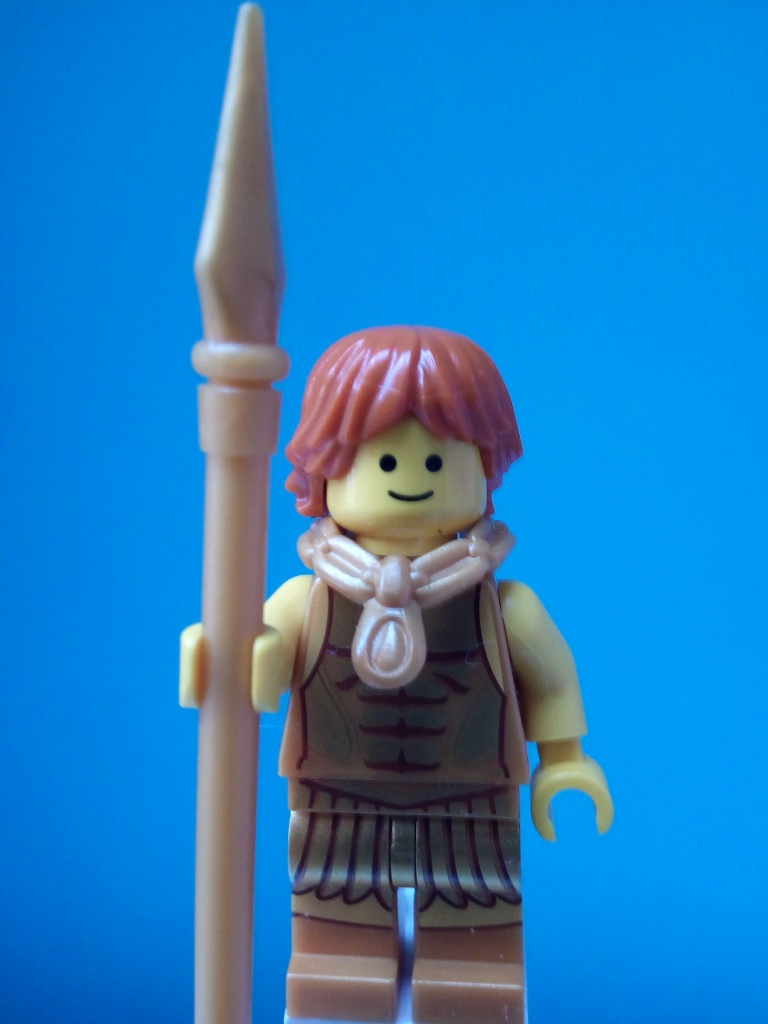
What is the history of Antenociticus? What do we know about him? And what does the future hold for our mysterious Geordie god? Join me on a Lego trip through time: past, present and future.
Once upon a time… in 1862 to be precise… an excavation uncovered what appeared to be a temple. It was found in Benwell, by local landowner George Wightwick Rendel, who was building a 7-bedroom mansion on Benwell Little Park, shown here in a painting by Henry Burdon Richardson. Rendel wrote a summary of the excavations for the Society of Antiquaries of Newcastle, but the original excavation reports have been lost.

The temple was located just outside Condercum Fort, the third fort from the East along the line of the Wall. Nothing remains of the fort itself now… it’s been absorbed by the outskirts of Newcastle. But its location was known, and Rendel called his new mansion Condercum House. In its grounds was the temple.
The temple was rectangular, with a rounded apse at the southern end, pointing down a steep bank. The earliest evidence we have for it comes from around AD 178. The latest evidence we can date comes from not much later. The building may only have been in use for a few decades, maybe even a few years. Three altars found within it tell us that the temple was used by Roman officers and dedicated to Antenociticus. The altars seem to have been buried, deliberately, face down. There was also evidence of a slightly larger than life-size statue: a head and fragments of a leg and forearm.

The remains of the temple show us that there was a door in the east wall. But much about this temple is a mystery. How much can we trust of what we see on the site?
In the original report by George Rendel, it was stated that there were traces of a doorway in the north wall. What would that have looked like? It would have been much more striking: the statue would have been in view from the doorway, framed in its apse.
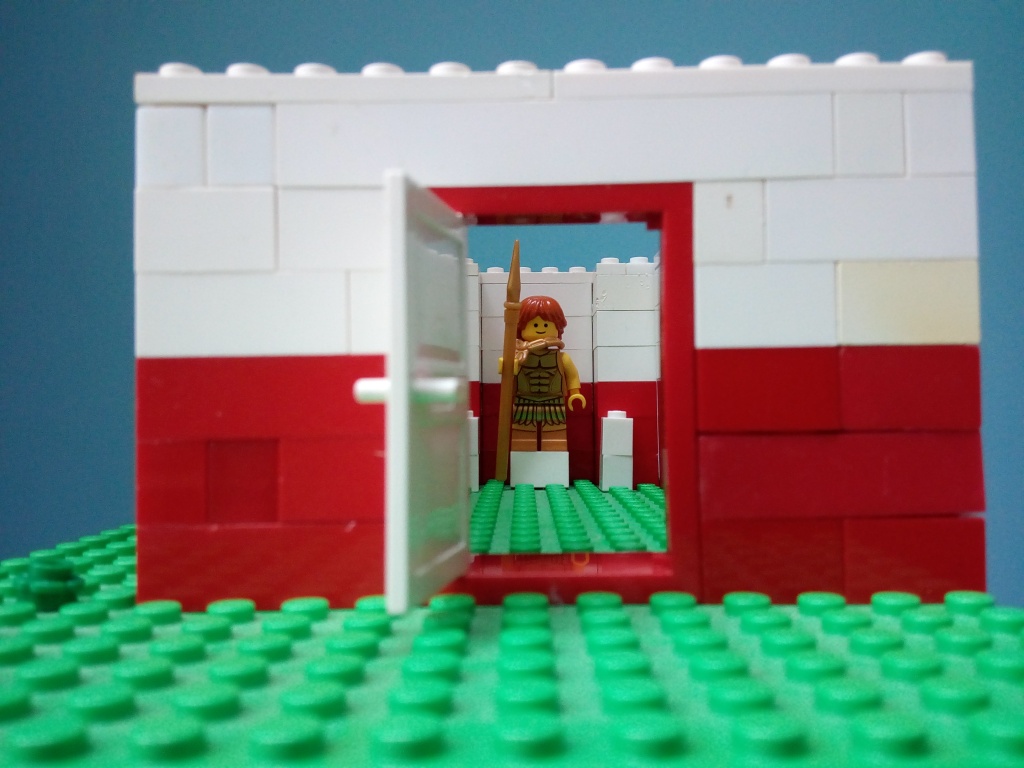
But what happened? Who would move a door lintel?
Perhaps Jessie Mothersole can help. Jessie was an archaeological illustrator who “walked the wall” in 1920, and published a book about her travels. She chatted to people along the length of the wall, collecting stories and sketching what she saw.

Jessie talked to some gardeners, in the grounds of the three big houses at Benwell. The houses were still there, but not for long: a decade later two of them would be torn down to make way for a housing estate, while the third became a school. She wrote…
“The gardener pointed out to me, over the dividing fence, the foundations of the little temple in the grounds of Condercum House, to which I next made my way. Here another friendly gardener came to my aid, and I saw the temple at close quarters, with its stone pavement, circular apse, and solemn grouping of yew-trees round the apsidal end…
I was told that some of the Roman masonry had been knocked down by soldiers who occupied the house during the recent war, and that it had been very unsatisfactorily replaced by masons.”
Maybe that is an explanation, at least in part, for some of the unanswered questions about the remains of the temple.
But – who was Antenociticus? The short answer is: we have no idea. His name has not been found anywhere else in the world. His name is not joined to the name of a Roman god, like so many other local gods were, so we don’t know whether he was a god of the place, or a war god, or a god of prosperity or something else entirely. We don’t know whether he was native to Benwell, or whether he had been brought by soldiers from elsewhere. He’s a mystery to us.
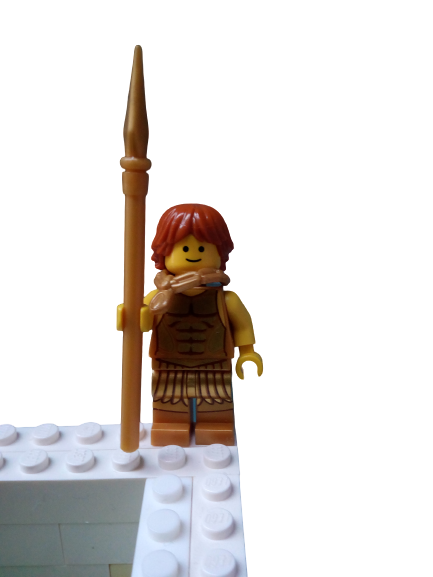
The head that was found in the excavation, and which is now in the Great North Museum: Hancock, has traces of a torc around his neck, and shaggy hair with turned up points that could suggest horns. These are not very Roman features. But building a temple to a god was very much a Roman practice, and the altars make it clear that Antenociticus was favoured by soldiers – for a while at least.
That’s where Antenociticus came from, but what can we see today?
Well, his temple is still visible in Benwell. There’s no museum, no reconstruction, no car park, not even a wall: just a fenced-off patch of grass in the middle of a 1930s housing estate.
Hardly anything has changed in the last 80 years. You can go through the little gate and stand in the temple, as Jessie Mothersole did in 1920, although the yew trees have gone, and the friendly gardener has been replaced by amused dog-walkers.
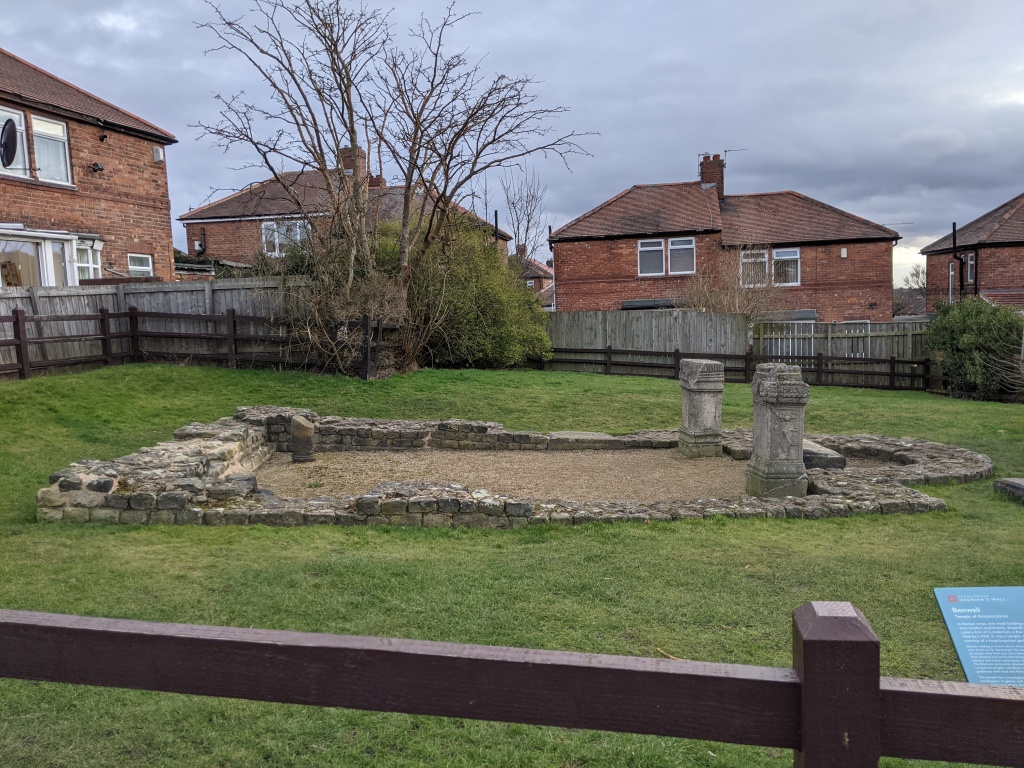
When we visited there was nobody about; just a freezing wind howling down the hill and knocking over our Lego figures!
The head of Antenociticus, and his altars, are now in the Great North Museum. One of the altars to Antenociticus was chosen for the new light display at the Roman Britain in Colour project. You can stand and watch as the stone altar becomes coloured, and then see a cavalry soldier ride by, before the head of Antenociticus is projected onto the altar.
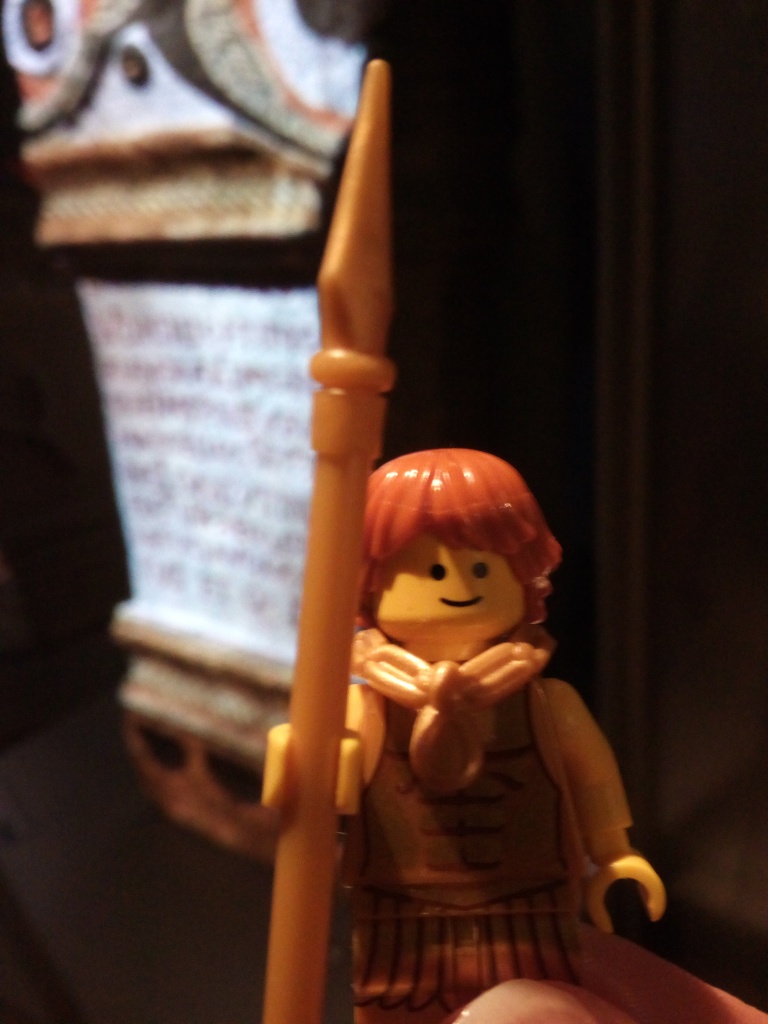
So what does the future hold for Antenociticus and his temple?
The temple of Antenociticus literally needs to be put back on the map. Back in the 1920s, people who walked the wall like Jessie Mothersole would follow the line of the wall as much as they could. But today the 10,000 tourists who walk the wall every year are directed by the Hadrian’s Wall trail away from the wall itself. They bypass this spot, and are directed instead along the more scenic line of the river, missing out the temple entirely.
I caught up with MP for Newcastle Central, Chi Onwurah, who has taken this to Westminster. She’s backing campaigners who want to see the trail moved. I asked her what she thought tourists were missing. She said that they were missing out on three things. First, the historical authenticity of actually walking the wall. Second, the unique sites themselves, like the Temple of Antenociticus or the vallum crossing at Benwell. And third, a vibrant, multicultural part of the great city of Newcastle, which is not unlike Hadrian’s Wall itself in Roman times – a mix of people, possibly with too much litter. She argues that history has a greater richness if we see the past for what it was, and try to look at the reality of people’s lives. She is pushing for improved signage, better local education in schools, and a greater awareness of heritage. The past is not another country, she told me: we walk in its footsteps now. Of course we mustn’t live in the past, but if you don’t know where you came from, it’s much harder to know where you’re going.
A big thank you to everyone who helped me out, with pictures and information and Lego! And I do hope that if you’re ever in the Newcastle area, you take a bit of time to go and visit the Temple of Antenociticus.
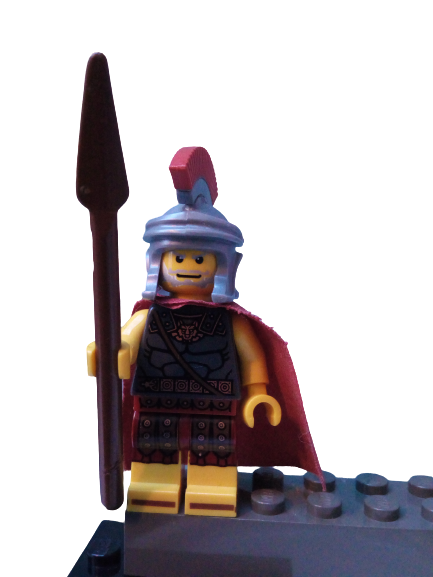
Find out more
Excavations
Rendal (recte Rendel), GW, ‘The Benwell discoveries’, Archaeologia Aeliana, 2nd series, 6 (1865), 169–71
Jessie Mothersole
The amazing 100-year-old travelogue of first ‘modern’ woman to walk Hadrian’s Wall – Chronicle Live
Hadrian’s Wall on New Bond Street – Reading Room Notes
In Westminster
This year is the 1900th birthday of Hadrian’s Wall – Chi Onwurah MP
In the media
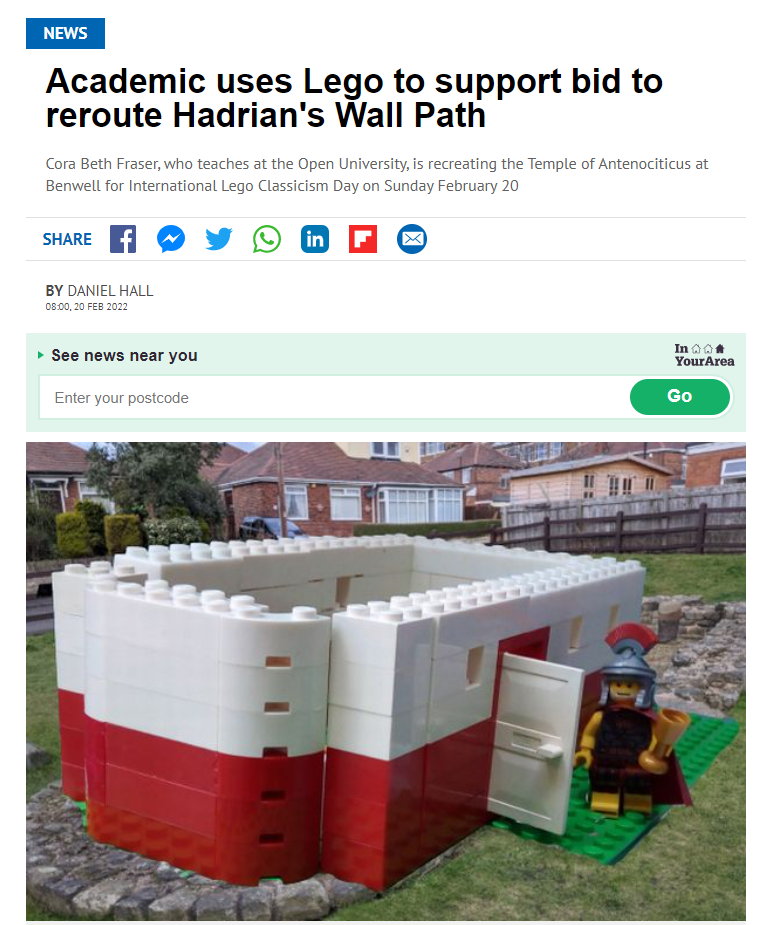
from Chronicle Live
Brilliant! Really interesting, and quite a mystery… 😊
LikeLike
Enjoyed that, thank you. Interesting and intriguing. South Shields’ very own stand up comedy star Sarah Millican touts ‘antibiotic’ as the best word to showcase the Geordie accent. I think ‘Antenociticus’ tops it 🤔😁
LikeLike
I’m very curious about the opinions of the people who live adjacent to the site of the Temple of Antenociticus. I would love to be able to see this place from a window and would visit it frequently, but do the inhabitants feel the same? Is there a sense of community associated with living next to a treasure of ancient history, or is the site considered a nuisance which invites disrespectful strangers to wander in, leaving litter pet waste behind? Is moving the trail likely to result in the dislocation of affordable housing? Could the area end up being commercialized to accommodate visitors, leading to the site having less meaning for the community?
LikeLike